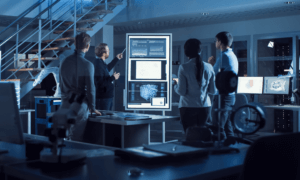Staying ahead of the competition is a challenging and often expensive task. While many economic incentives are targeted at a particular industry or even a specific company, the Research and Development (R&D) tax credit helps level the playing field and incentivizes business growth in the United States. As a general business credit, it provides valuable cash savings, enabling reinvestment and growth.
The federal R&D tax credit, also known as the Research and Experimentation (R&E) credit, provides up to approximately 10% of project-qualifying expenditures. To determine if a research project (or portion of a project) is eligible for inclusion in the credit R&D credit, the business component (the R&D credit phrase for “project”) and associated activities must satisfy the R&D tax credit four-part test.
The R&D Tax Credit Four-Part Test
1. Permitted Purpose
Research must be undertaken for a Permitted Purpose, which includes a new or improved product or process function, performance, reliability, or quality. Specifically excluded are efforts related purely to aesthetics or taste.
2. Technological Uncertainty
There must be Technological Uncertainty related to the capability, methodology, or design of the business component. This requirement excludes economic uncertainty and other uncertainties related to market acceptance or performance.
3. Technological in Nature
The project or activity must be Technological in Nature. The business component must rely on a hard science such as engineering, physical or biological sciences, or computer science. A qualified business component cannot be based on soft sciences such as arts, humanities, social science, or psychology.
4. Process of Experimentation
A Process of Experimentation must be used to resolve the uncertainty. The taxpayer must demonstrate how business components progress from initial concept through design, testing, and validation to commercialization and also how the technological uncertainty is mitigated throughout this process.
Expenses That Can Help Generate the Tax Credit
When a project is determined to meet the above four criteria, the associated expenses for that project can be quantified and used to generate an R&D tax credit. Qualified research expenses consist of the following three basic expense categories:
Employee Wages
Wages include the eligible portion of all taxable compensation and are typically the major driver of R&D credits. Qualified wages are the portion of an employee’s compensation corresponding to the percentage of working time engaged in one of the following designations:
- Direct conduct is the most “common sense” wage category. Consisting of engineers, scientists, and programmers directly engaged in performing the basic work required to complete an R&D project, direct conduct wages are typically the largest wage expense category.
- Direct support wages are those of technicians, laboratory specialists, and even engineers or scientists functioning in a support role on a project. Typically, direct support time is spent building and testing prototypes, facilitating lab trials, or ensuring applicable quality and regulatory standards are observed.
- Supervision of qualified research projects is includable when an employee in an oversight position provides technical guidance and assistance to a project. Often, direct supervision takes the form of technical design reviews, day-to-day technical input, and initial conceptual planning.
Supplies Used for the Project
Supplies are the materials used to evaluate and test designs throughout the development process. Eligible supplies include items used in prototype builds, business component performance evaluations, and engineering software licenses.
Out-of-House Project Research
Contract Research is outside vendor expenses paid to individuals or other businesses on behalf of the company engaging in qualified research. Generally, if the service performed would be considered an in-house qualified wage expense, the amount is includable. Any contract research expenses are included at 65% and must occur in the United States.
Alternative Minimum Tax (AMT)
The AMT restriction frustrated many taxpayers who could not offset tax with the R&D credits their businesses were generating. The PATH Act allowed eligible small businesses (ESB) to offset tax liability below their AMT amount. An ESB is defined as a corporation that is not publicly traded, a partnership, or a sole proprietorship with average annual gross receipts not exceeding $50 million for any of the three taxable years preceding the current taxable year.
Payroll Tax Offset
One major flaw with incentivizing R&D investment through a tax credit is that a business must have taxable income to offset to benefit. This meant many high-tech startups and young companies could not use the R&D credit. This changed with the PATH Act, as now Qualified Small Businesses (QSBs) can use the R&D tax credit to offset the FICA portion of the employer payroll tax.
A QSB is defined as a business with less than $5 million in annual gross receipts and has no gross receipts for more than five years. The maximum payroll tax offset per year is $500,000 and can be generated in up to five tax years. This valuable enhancement to the R&D tax credit enables startups to keep up to $1.25 million at work during a critical phase in a company’s lifecycle.
Does it Sound Like You Qualify for the R&D Tax Credit?
The R&D tax credit is a complicated intersection of Congressional intent, IRS regulations, and tax court rulings. The process, while complex, can be navigated efficiently and effectively with the right help. Our R&D credit experts are here to provide direction and help you create a plan to use this credit to help build your business. Contact us to get started.
















